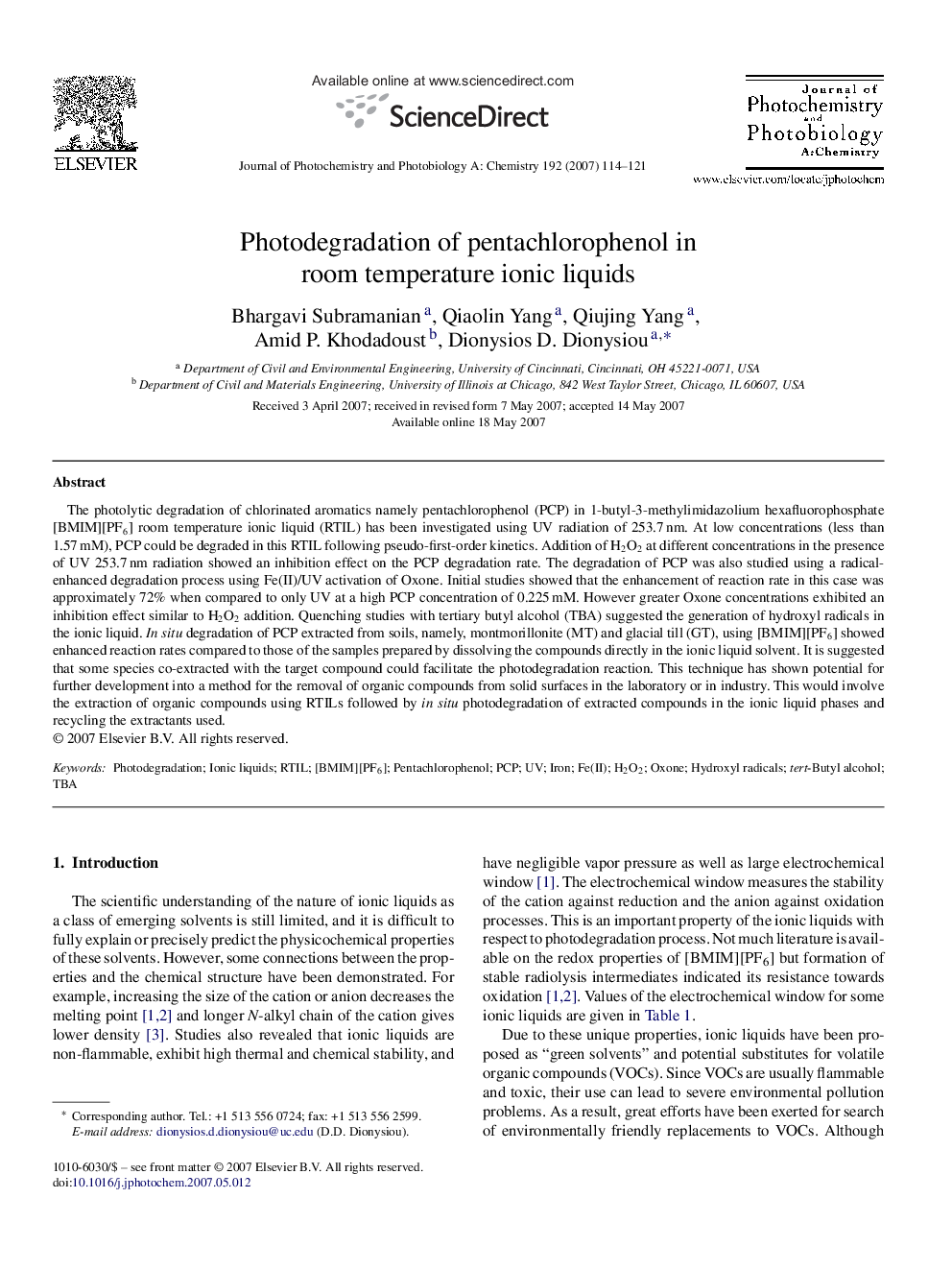| Article ID | Journal | Published Year | Pages | File Type |
|---|---|---|---|---|
| 27878 | Journal of Photochemistry and Photobiology A: Chemistry | 2007 | 8 Pages |
The photolytic degradation of chlorinated aromatics namely pentachlorophenol (PCP) in 1-butyl-3-methylimidazolium hexafluorophosphate [BMIM][PF6] room temperature ionic liquid (RTIL) has been investigated using UV radiation of 253.7 nm. At low concentrations (less than 1.57 mM), PCP could be degraded in this RTIL following pseudo-first-order kinetics. Addition of H2O2 at different concentrations in the presence of UV 253.7 nm radiation showed an inhibition effect on the PCP degradation rate. The degradation of PCP was also studied using a radical-enhanced degradation process using Fe(II)/UV activation of Oxone. Initial studies showed that the enhancement of reaction rate in this case was approximately 72% when compared to only UV at a high PCP concentration of 0.225 mM. However greater Oxone concentrations exhibited an inhibition effect similar to H2O2 addition. Quenching studies with tertiary butyl alcohol (TBA) suggested the generation of hydroxyl radicals in the ionic liquid. In situ degradation of PCP extracted from soils, namely, montmorillonite (MT) and glacial till (GT), using [BMIM][PF6] showed enhanced reaction rates compared to those of the samples prepared by dissolving the compounds directly in the ionic liquid solvent. It is suggested that some species co-extracted with the target compound could facilitate the photodegradation reaction. This technique has shown potential for further development into a method for the removal of organic compounds from solid surfaces in the laboratory or in industry. This would involve the extraction of organic compounds using RTILs followed by in situ photodegradation of extracted compounds in the ionic liquid phases and recycling the extractants used.
